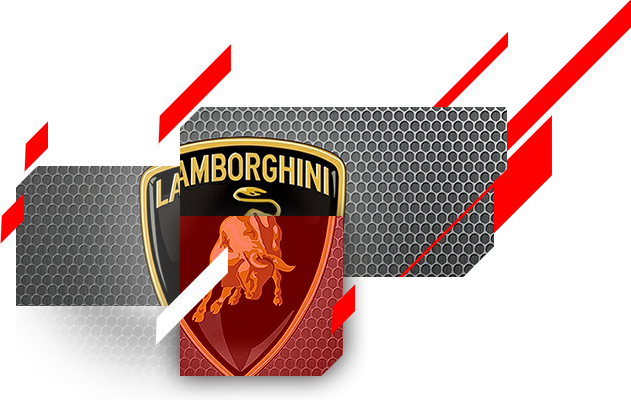
The Start of an Automotive Legend
The story of how Ferruccio Lamborghini decided to make sports cars himself at the end of 1962 has been circulated often and with many variants, legend and truth having become inseparably mixed. Essentially this is what seems to have taken place:
Ferruccio Lamborghini owns a collection of powerful Jaguars, Mercedes, Ferraris and Maseratis, but no car completely satisfies him. In one case, the luxury is insufficient for him and in another case, the ventilation is too weak or the quality inferior or the power transmission noise seems to be too loud for him. Lamborghini is not even happy with the workmanship on his new Ferrari 250 GT. And as a result, requests a meeting with Enzo Ferrari in nearby Maranello, but is refused.
He has the GT taken to pieces by his engineers and recognizes that many of the parts used are standard items. Lamborghini thinks that he could build such a sports car very much better himself and realizes that if he were to do without his expensive motor sport, he would even be able to open up a new, profitable business segment.
1963: The Sports Car Lamborghini Brand is Established
In May 1963, Ferruccio Lamborghini established his own motorcar company, Automobili Ferruccio Lamborghini S.p.A., in Sant’Agata Bolognese – a carefully selected location in the small town between Modena and Bologna. The ultra-modern plant in green meadow land with an area of 50,000 m2 had plenty of space to grow and a location where the tractor and heating factory was not too far away. It was carefully selected because it also was in the middle of the “Terra di Motori”, engine country, home to the factories of Ferrari, Maserati or Ducati, and now Lamborghini as well.
Although a highly qualified source of skilled workers from the sports car industry existed, the wage level was low because the region was otherwise relatively structurally weak. Lamborghini gave the municipality an employment guarantee for his workers and in return he received a long-term interest-free loan. The impatient boss exerted considerable pressure during erection of the factory and after just a year it was complete.
Ferruccio Lamborghini’s pursuit for perfection was defined by his invention of the 350GT – a truly uncompromising GT touring car. The engine had to be a V-12 and built for the smooth running GT car Lamborghini envisioned and couldn’t borrow from any other manufacturer.
After Lamborghini succeeded in building a new automotive class that shook the car industry, it was time for something new — something that not only achieved desired perfection, but was also extreme. And at that point, not only was the Miura born but a new automotive class of the Supercar. This remarkable car immediately became a symbol of youth and wealth. Not only did it require far more maintenance and attention, but the Miura was very low to the ground requiring the agility of a gymnast to enter in and out of it. Only an all-out sports car enthusiast would willingly undergo a workout like this to experience the Miura.
Above all, it was the most fashionable car of its day. It was a car that the very wealthy simply had to have symbolizing an expression of the audacity, gusto for living and freedom to travel characterized at that time. The Miura could clock 280 km/hour, an amazing speed in a country like Italy that was still populated by a handful of cars such as the Fiat 500 and 600 or the 1100 and the Giulietta. The explosive personality of the Miura perfectly reflected how people dressed and thought, and like its bold colors – ultra-modern, absolutely new and matchless – it became part of an era. An orange or acid-green Miura darting through the sparse grey-colored traffic made any other car invisible. Almost inevitably overnight it became the favorite among playboys, film stars, industrialists, musicians and royalty around the world.
Continuing along the line of Supercars, the Countach was developed featuring the famous scissor doors that have become synonymous with the word Lamborghini. The Countach was exhibited at the 1971 Geneva Motor Show with great success as the star of the entire show sending Lamborghini away from the show with a long list of pre-orders. This was a truly revolutionary car, starting with its line, which was the first thing that left all those who saw it at that Motor Show speechless with admiration. The Countach had a sleek and aggressive snout. The flat windscreen connected seamlessly to the front bonnet on one end and the roof on the other. The roof continued over the engine hood, forming a single gradual curve that went from the front fenders to the tail panel of the body. Once again, Lamborghini upset preconceived notions. It went against everything that had been done until then, proceeding along its own course that was completely removed from what others were doing.
The Countach’s successor, Diablo, was presented in 1990 and ready for sale for the 1991 model year. With the name of a particularly fierce fighting bull of the nineteenth century, the Diablo lived up to expectations. The Countach’s follower could not be a conventional car. It had to be extreme, spectacular, forceful and uncommon with its 492 hp generated by a 5.7-litre V12. From a technical standpoint, it represented a significant development of the Countach. Its designer, Luigi Marmiroli, attempted to overcome the less positive aspects of the previous project and prepared a truly modern, up-to-date car. Despite the numerous stylistic incursions from the United States, its line nevertheless maintained an appreciable overall style. But the Diablo was not only attractive; it was also extremely powerful and boasted of solid technical foundations. With its twelve-cylinder engine, it clocked a speed of over 327 km/hour. In 1990, the Diablo was presented in the two-wheel drive version, but a four-wheel drive version was already in the wings. From that point on, this would become a distinctive feature of the top Lamborghinis.
The successor to the Diablo became available in 2002 with the Murciélago. It is almost superfluous to point out that this new model was also named after a famous, fierce fighting bull. The fact that the Spanish word actually means ‘bat’ only served to augment the dark, almost nocturnal magnetism of this magnificent car. Its power was boosted to 580 hp, increasing its speed, muscle and acceleration. What had been augmented above all was the sensation of the overall quality of the car with a level of finishing touches that was even better than the already excellent results of the last Diablos. The Murcielago was powered by an evolution of the Lamborghini V12 engine and was once again a car from Lamborghini that defined the word “Supercar”.
The latest model added in 2011 to the Lamborghini lineup was the Aventador LP700-4. The Aventador was another engineering advancement to the line of Lamborghini Supercars that increased focus on handling and acceleration. It has the most advanced styling and performance to date – brutal power, outstanding lightweight engineering, the very finest equipment and phenomenal handling precision.
Now enthusiasts and owners of the Lamborghini brand can share the history of Ferruccio’s pursuit for uncompromising perfection, and celebrate by experiencing the brand that Ferruccio Lamborghini built through his vision and passion in the automotive industry.




